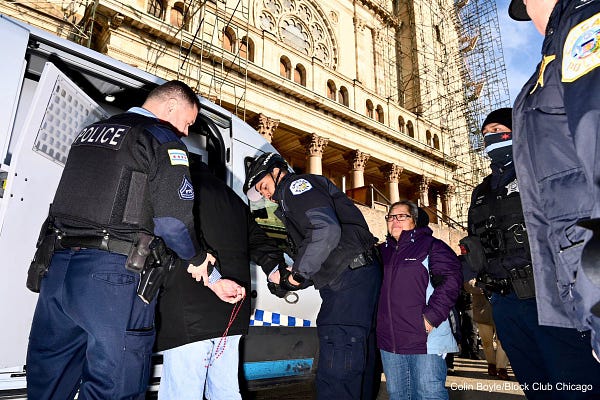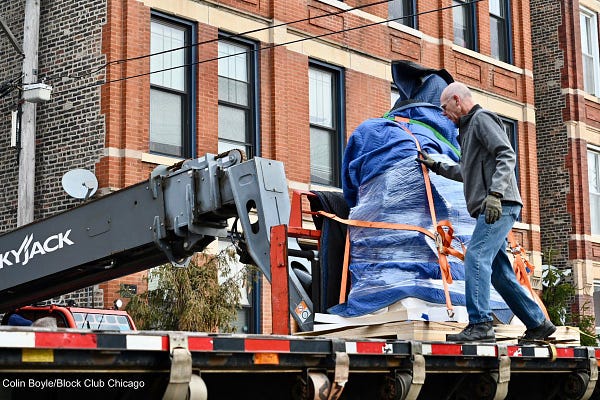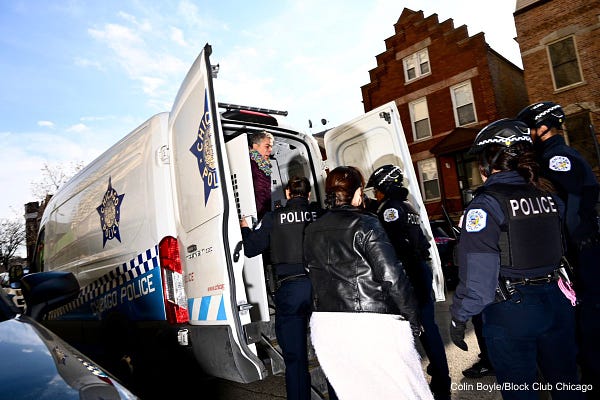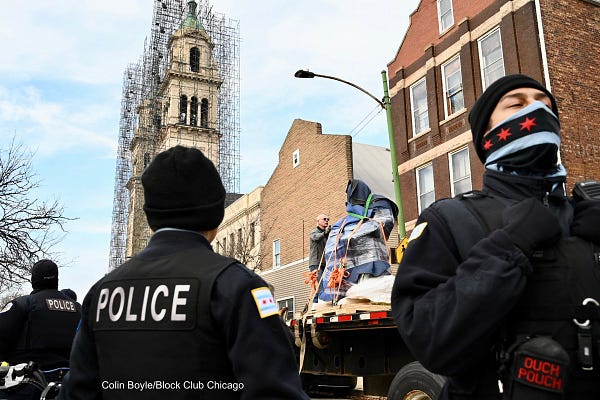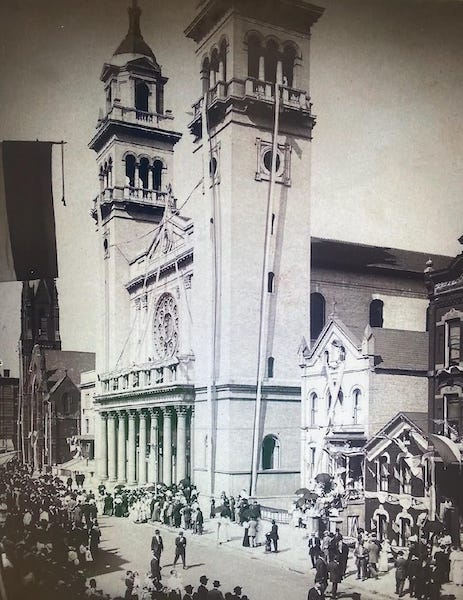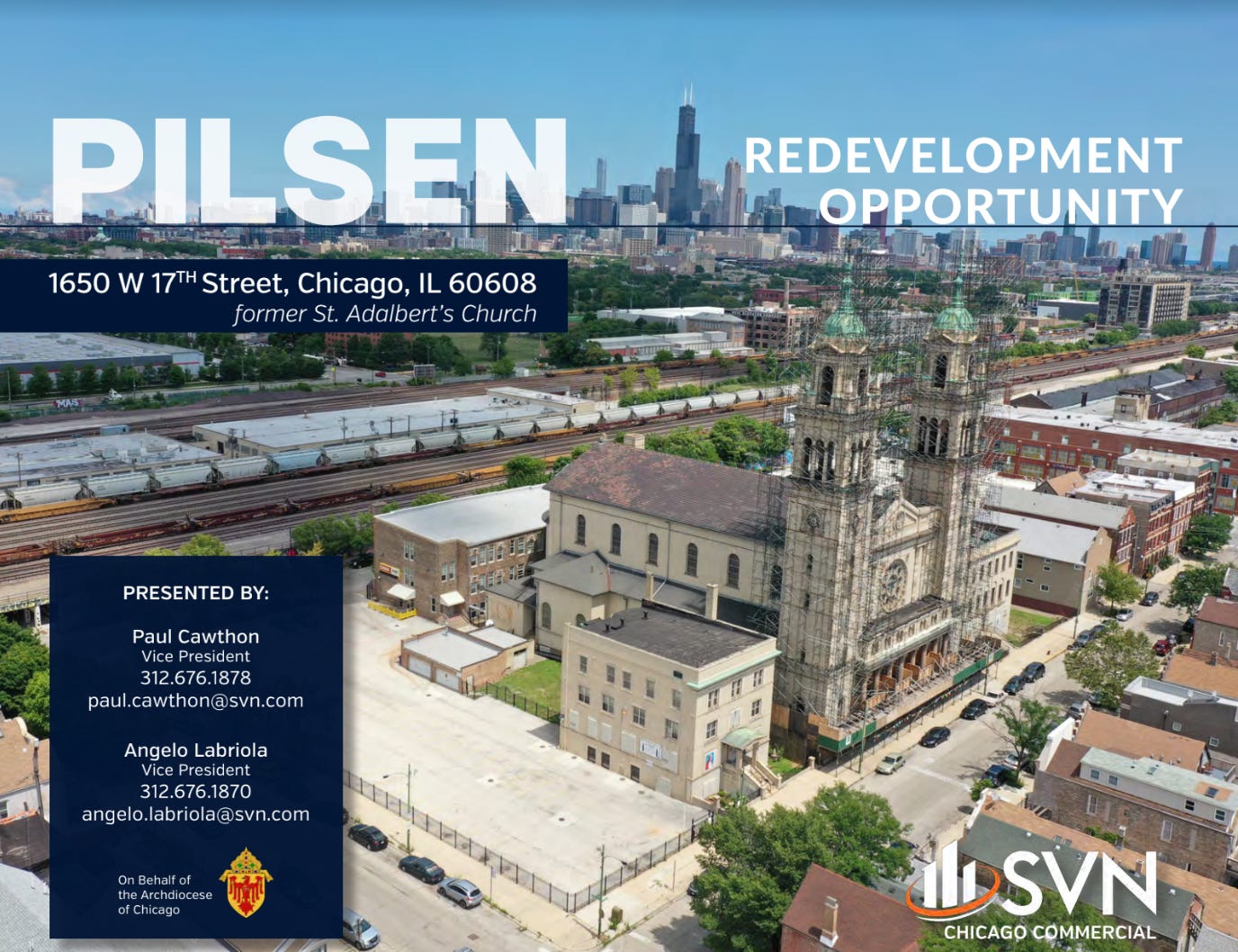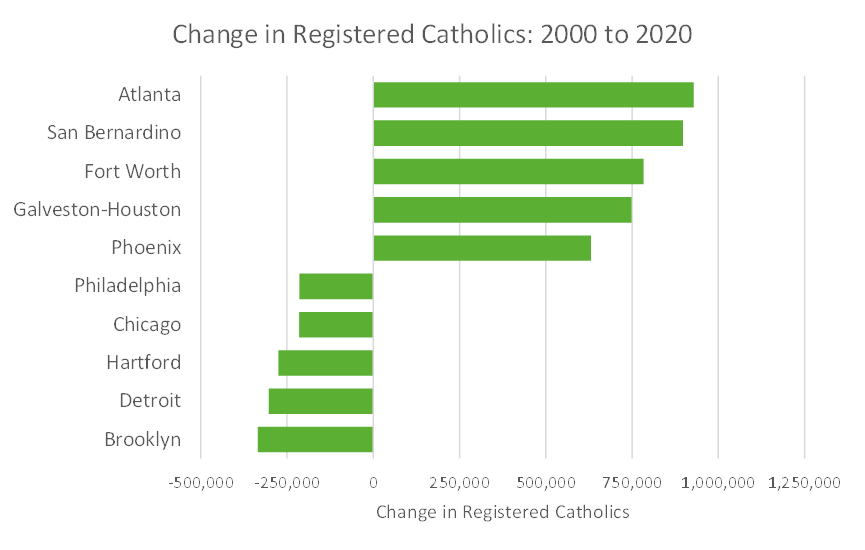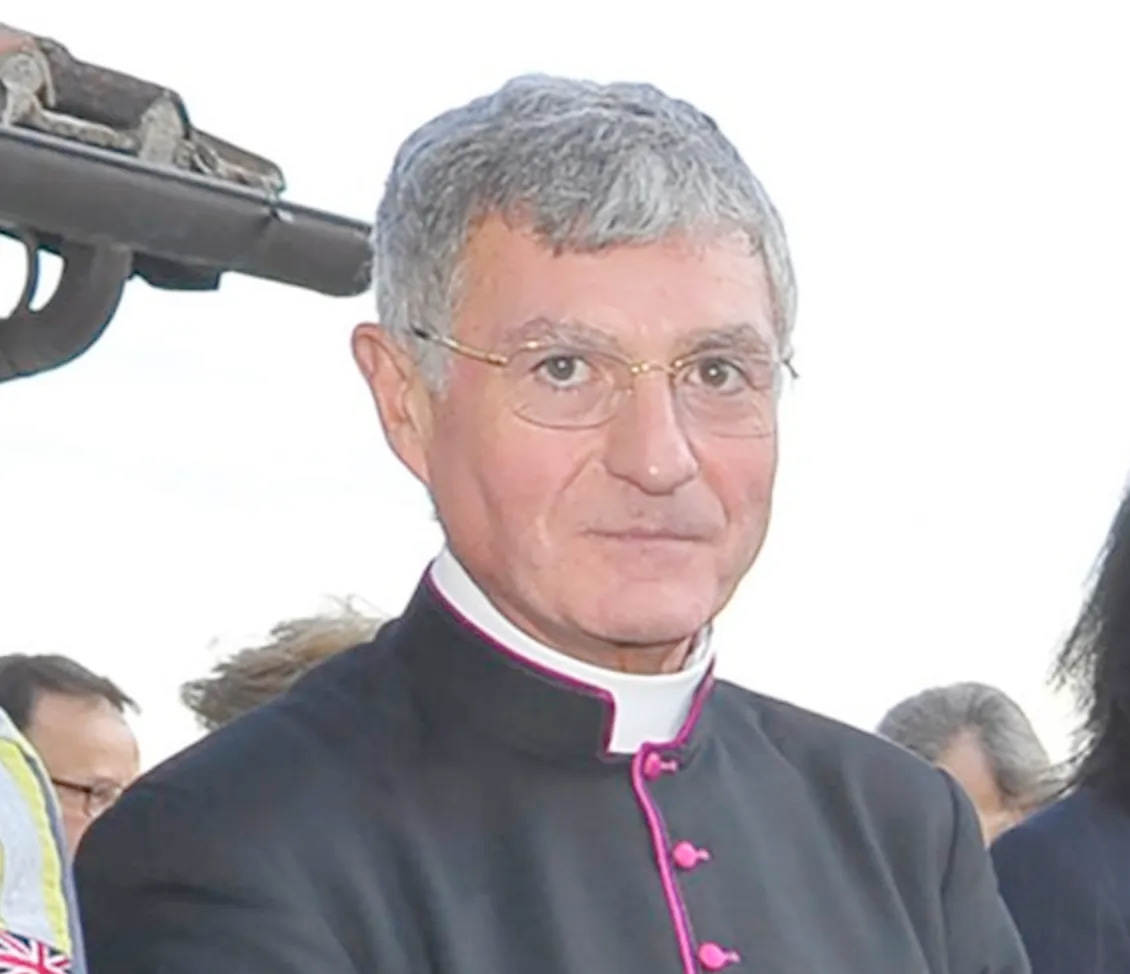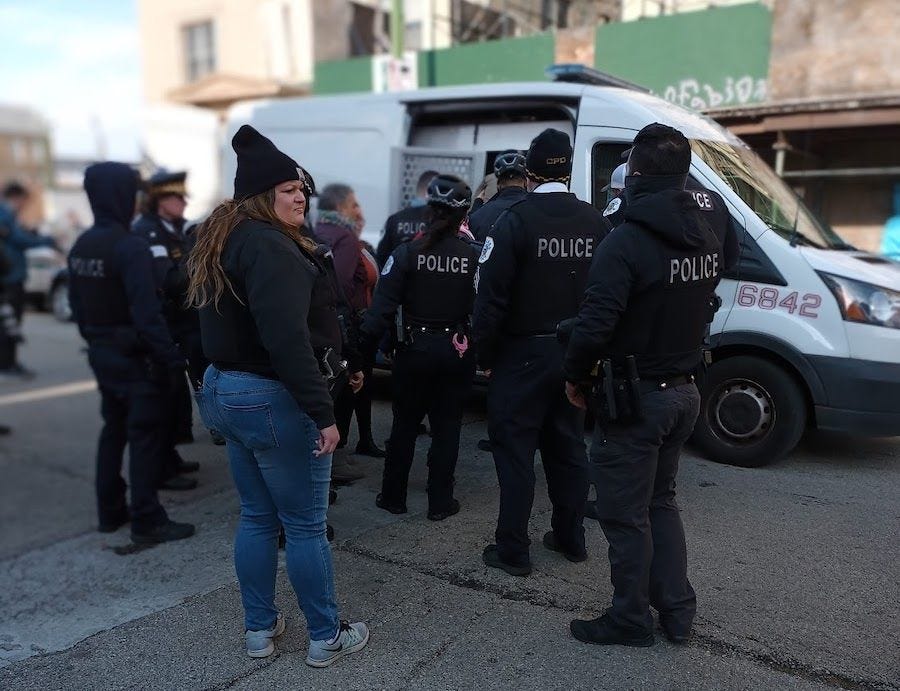
Five Chicago Catholics were arrested Tuesday, as they protested the removal of a Pietà statue from a shuttered local Catholic church.
The arrests came after months of protests, as demonstrators have tried to prevent both a sale of the St. Adalbert’s church building in Chicago’s Pilsen neighborhood, and the removal of a large Pietà statue, which was relocated Tuesday to a nearby parish church.
Protestors have sued Chicago’s mayor over the church’s zoning designation, and despite an archdiocesan assessment which says repairs are an insurmountable cost, demonstrators insist that St. Adalbert’s church could become financially sustainable.
After a parish statue was loaded onto a flatbed truck outside St. Adalbert’s Tuesday, five protesters reportedly attempting to block the truck were arrested, a Chicago police spokesman told media. Charges have not yet been filed.
According to a group calling itself the St. Adalbert’s Rosary Group, the five demonstrators arrested were Władysława Domaradzka, Andzej Bobak, Judy Vazquez, Roman Waksmundzki, and Rosa Ibanez.
The St. Adalbert Rosary Group says it is “an assembly of former congregants of the St. Adalbert Church who pray the rosary multiple times each week outside the church and on Sundays outside Holy Name Cathedral in Spanish, Polish, and English with the intention of saving the church.
“The group also actively holds on-site vigils to preserve the church and its sacred objects, including a full-sized replica of Michelangelo’s Pietà, from plunder, and seeks to reopen the church as a Catholic shrine, monastery, or church,” according to the group.
In a statement to The Pillar Tuesday, the group said that “St. Adalbert's was paid for through the great sacrifices of Polish immigrants who came to America in the late 19th and early 20th centuries, people who made it their highest priortiy to conform their wills to the Will of God. Churches such as St. Adalbert's testify to that. It was created to last forever.”
The statement continued: “Cardinal Cupich recently sold the parking lot at his Holy Name Cathedral for over $100 million ... Could some of this not be used to preserve the historic epicenter of Chicago's Polish Catholic culture? If not, can't we at least be given the opportunity to fund its preservation through other means?”
📰
St. Adalbert’s Parish was founded in 1874, in a neighborhood of then mostly Polish immigrants. The church itself was completed in 1914.
As the neighborhood changed, the parish adapted to demographic shifts, and began offering Spanish-language Masses and devotional practices drawing from the largely Mexican population of the Pilsen neighborhood.
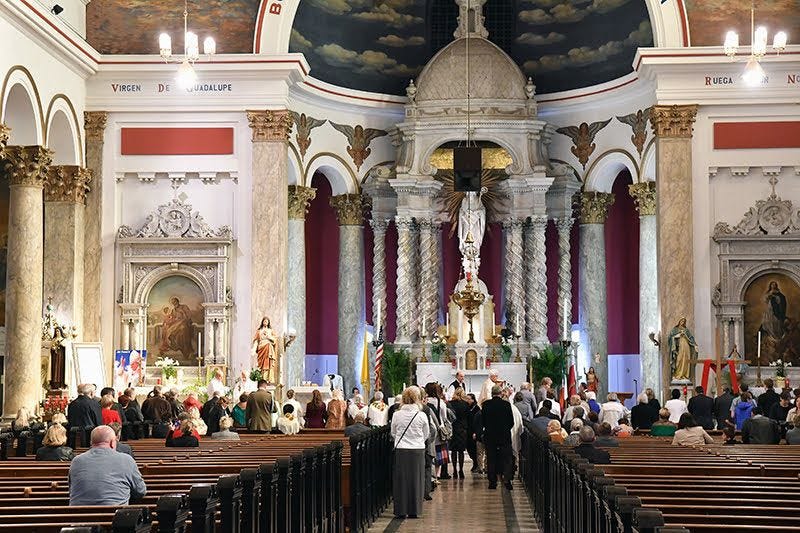
In recent years, the church has faced expensive maintenance needs, which its parish community has little ability to pay.
In 2016, Cardinal Blase Cupich issued a decree merging three neighboring parishes, including St. Adalbert’s, into the newly created St. Paul’s Parish. The cardinal also announced plans to close St. Adalbert’s church itself. When parishioners pushed back, the cardinal announced the church would stay open, but be listed for sale.
Catholics appealed to the Vatican the merger of the three parishes, but in 2019, the Apostolic Signatura, an appellate tribunal in Rome, upheld the cardinal's decision to merge the parishes.
Later in 2019, citing a Sunday Mass attendance decline of two-thirds since 2000, and more than $3 million needed in repairs, Cupich decided that St. Adalbert's Church itself would close.
The cardinal’s decree noted that an attempt had been made to “sell the church to a private buyer willing to repair, renovate, and preserve the church for Catholic worship,” but “the buyer never came through.”
The decree added that the church “has been in a very perilous state of repair,” and that “there are no parochial, archdiocesan, or other ecclesiastical funds available to repair and maintain St. Adalbert Church for divine worship or any other purpose of the Church.”
Among other issues is the installation of expensive scaffolding used to keep the church's towers from falling.
“If [needed] repairs are not made within a reasonable period ... the church will become a dangerous nuisance to the community,” the 2019 decree said.
Despite the cardinal's view of the situation, the rosary group believes the church could be maintained as a self-sustaining shrine or oratory, and that the archdiocese should continue to prioritize plans to attempt such a project before selling the property to a developer.
A spokesman said the group has developed a plan for the church’s ongoing maintenance that could involve the support of a religious order to staff its sacramental and devotional needs, and the financial support of philanthropists interested in historic preservation — with the goal that the church could become financially solvent.
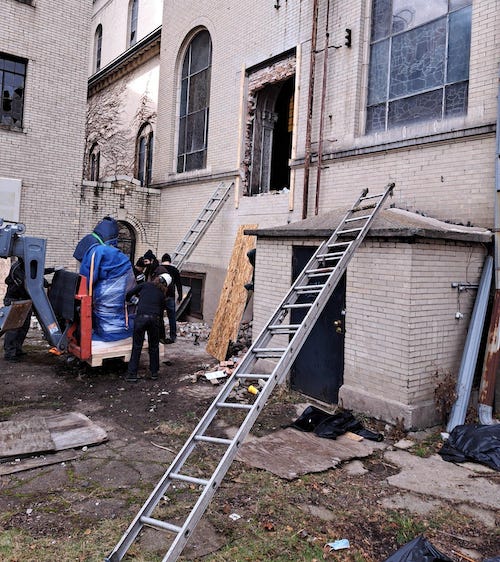
According to the rosary group, there has been both a spiritual and political battle for the future of the church since its doors closed in 2019.
For its part, the rosary group says it has prayed regularly outside the church building, even in Chicago’s frigid winters.
At the same time, local Alderman Byron Sigcho-Lopez has made efforts to change the church building’s zoning, a move that would require any property developer to engage with neighborhood and parish representatives before development plans for the building could be approved.
Amid those efforts, according to local media, the property has twice gone under contract, but both deals have fallen through.
While the property would seemingly belong canonically to St. Paul’s Parish, real estate title to churches in the Archdiocese of Chicago is held in a corporation sole structure by the archdiocese itself.
Alderman Sigcho-Lopez’s efforts have met significant resistance. In May his plan gained the support of the city council’s zoning committee, despite promises from archdiocesan attorneys that they would sue to block the rezoning.
But according to Block Club Chicago, political allies of Mayor Lori Lightfoot blocked the rezoning vote.
Last week, the St. Adalbert’s Rosary Group filed suit against the mayor, charging that the Lightfoot gave favoritism to the both developers and the Archdiocese of Chicago over the needs of the community, violating religious liberty protections and the federal Religious Land Use and Institutionalized Persons Act of 2000 (RLUIPA).
The case is now pending in federal court.
Start your day with Starting Seven - a daily news roundup in your inbox.
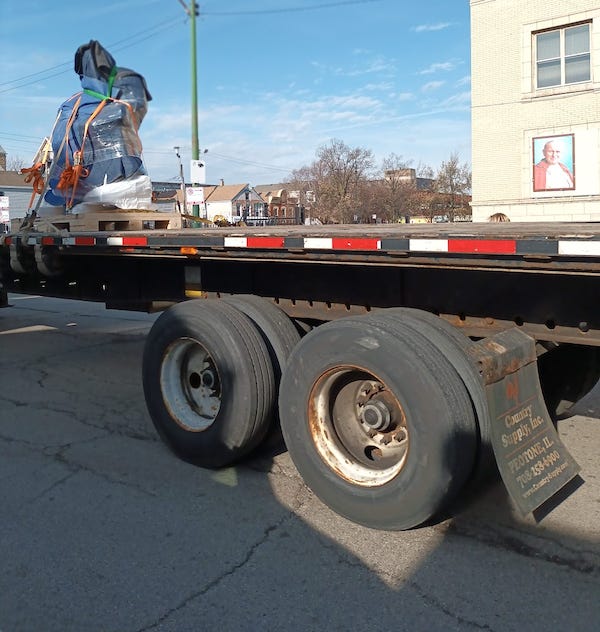
The 6,000 pound Pietà statue itself was initially scheduled to be removed from the church in September, but a protest thwarted that plan. Another planned move was halted in October, as local residents and demonstrators argued that workmen lacked the proper permits to remove the statue.
A January letter of intent obtained by The Pillar indicates that that a $3.95 million offer on the property was made by ANEW LLC, which the rosary group claims is a real estate holding company directed by Dan Davidson, a real estate developer who in 2003 converted a historic Miami synagogue into The Temple House, an upscale event venue.
The letter of intent indicates that ANEW would intend to use the St. Adalbert’s property for “assembly use, including but not limited to: weddings, life celebrations, private events, dinner gatherings, educational seminars, religious ceremonies, charities, galas and other functions in accordance with traditional socially acceptable standards.”
The rosary group said that sale would be a “surrender” of Catholic patrimony.
“When the Church is surrendering some of the greatest of its historical and architectural treasures to the secular world, in this case for what we know to be sordid use, with familiar secrecy and callousness, serious questions need to be asked by the pope and others at the Vatican. We need to address why we're giving up on these treasures of the faith in response to declines in Mass attendance when so many Catholics are leaving the Church for other denominations,” its Nov. 29 statement said.
“The leaders of our Church are giving up on these churches in a way that is leading to their unnecessary destruction,” the group added.
It is not clear whether that possible sale to ANEW is still in the works; Davidson himself could not be reached for comment.
Since 2018, the Archdiocese of Chicago has been in the process of its “Renew My Church” initiative, which will see the number of archdiocesan parishes reduced from 344 to 221, and see at least 57 parish churches shuttered across the archdiocese. The archdiocese has roughly half the number of priests it did in 1975, and Mass attendance has declined sharply in recent decades.
Canon law provides that “if a church cannot be used in any way for divine worship and there is no possibility of repairing it, the diocesan bishop can relegate it to profane but not sordid use.”
The law specifies that “where other grave causes suggest that a church no longer be used for divine worship, the diocesan bishop, after having heard the presbyteral council, can relegate it to profane but not sordid use, with the consent of those who legitimately claim rights for themselves in the church and provided that the good of souls suffers no detriment thereby.”
In its 2019 decree, Cupich acknowledged the Vatican criteria for the relegation of church to secular use.
“The situation at St. Adalbert Church encompasses all these factors and more. Moreover, there is no government support for building or maintaining churches in the USA,” the cardinal wrote.
“Relegation of St. Adalbert Church to profane but not sordid use ... enhances the possibility that the church and other real property assets of the former St. Adalbert Parish would become a sources of income for St. Paul Parish, its parishioners, and its missions,” he added.
Amid of a spate of church closures in the United States in recent decades, parishioners making appeals to the Vatican have seen success if officials determine that the proper consultative process for a church closure was not followed, or if the church itself is determined to be sufficiently suitable for continued sacramental worship.
Several large dioceses have announced consolidation and merger plans in recent years, amid massive demographic and geographic shifts in the U.S. population.
The Chicago archdiocese has not yet responded to questions from The Pillar.
Editor's note: This story has been updated since its initial publication.


